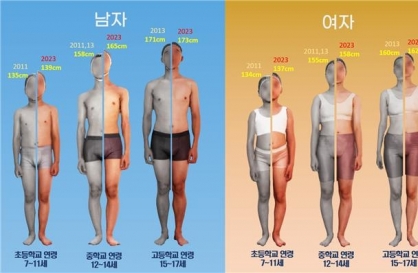[Editorial] Telemedicine dispute
Policymakers must upgrade remote medical services via pilot program
By Korea HeraldPublished : June 1, 2023 - 05:30
COVID-19 has changed many things in South Korea. One inspiring change involves telemedicine, which has helped doctors treat patients via remote solutions -- a revolutionary adoption of innovative technology for the conservative medical sector thanks to the urgent need for fast and contactless treatment.
Telemedicine services were provided to 14.2 million patients over the three-year period from 2020 through April this year in connection with treatment of the novel coronavirus, according to the Health and Welfare Ministry. But it was only temporarily available.
A growing number of experts and patients who appreciate the advantages of remote medical services have called for the government to make them part of regular medical treatment.
However, this is no easy task. At this moment, telemedicine lacks legal grounds now that the pandemic is receding and full-fledged remote medical services are strongly opposed by certain medical groups and doctors concerned about the possibility that their expertise and interests may be compromised.
Against this backdrop, the government has decided to launch a telemedicine pilot program from June, though such services will be strictly limited to second-visit patients, some patients who are unable to visit clinics or those who have treatment records that meet certain conditions.
Under the pilot program, patients who visit clinics at least once within a year can use the contactless medical services. Exceptions for the second-visit-only rule are applied to those who suffer from infectious diseases or live on remote islands, as well as the elderly who cannot visit clinics, among others.
It is regrettable that the pilot service comes with a severely restricted scope and such conditions. Given that 99 percent of remote medical services during the pandemic period involved first-visit patients, it hampers the key advantage of telemedicine, especially for those with light illnesses that require only a single consultation and prescription.
The Health Ministry and the Korea Medical Association struck a deal in February to attach such strict conditions, one of which is to ban the establishment of new medical institutions specializing in remote medical services.
There is no doubt that physical contact between doctors and patients is far superior to remote medical services in many ways. Doctors can better check the detailed condition of patients and offer more accurate diagnoses, not to mention offering treatment or additional examinations including blood tests at hospitals and clinics as necessary.
But health authorities and doctors have to face the reality of Korea’s quickly aging population as demand for medical services is soaring across the nation.
Those living in metropolitan areas are in a relatively better condition since a number of big hospitals and midsize clinics offer regular and emergency medical services. But remote areas critically lack local hospitals, doctors, nurses and related facilities. Traveling from rural areas for hours to big cities for a brief consultation with a doctor is often a big challenge for those who do not qualify for the exceptional conditions.
Another serious problem of the pilot program is that patients who see doctors through contactless consultations have to physically go to pharmacies to get the medicine, as delivery of prescription drugs remains banned. This lays back the limitation of the pilot program and casts a cloud over the adoption of full-fledged telemedicine in the future.
Adding debilitating restrictions to remote medical services goes against broader trends. Among 38 members of the Organization for Economic Cooperation and Development, 32 countries have already allowed for contactless medical services in recognition of their effectiveness in treating patients.
The debate about telemedicine started in the 1990s here. But it has been mired in disputes due to vested interests by some medical groups. With a wealth of information technology and infrastructure available, policymakers are urged to seek ways to upgrade telemedicine through the pilot program. Lawmakers, who have repeatedly ignored the need for adopting telemedicine more widely, are also required to take the issue seriously and join forces for related legislation.
-
Articles by Korea Herald









![[Weekender] Korean psyche untangled: Musok](http://res.heraldm.com/phpwas/restmb_idxmake.php?idx=644&simg=/content/image/2024/05/02/20240502050841_0.jpg&u=)








![[Eye Interview] 'If you live to 100, you might as well be happy,' says 88-year-old bestselling essayist](http://res.heraldm.com/phpwas/restmb_idxmake.php?idx=652&simg=/content/image/2024/05/03/20240503050674_0.jpg&u=)
